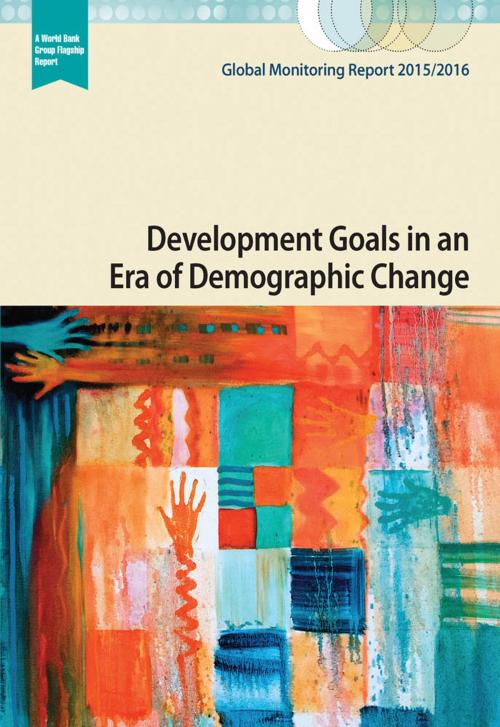Global Monitoring Report 2015/2016
Development Goals in an Era of Demographic Change
Business & Finance, Accounting, International, Economics, Economic Conditions, Macroeconomics| Author: | World Bank;International Monetary Fund | ISBN: | 9781464806704 |
| Publisher: | World Bank Publications | Publication: | November 2, 2015 |
| Imprint: | World Bank Publications | Language: | English |
| Author: | World Bank;International Monetary Fund |
| ISBN: | 9781464806704 |
| Publisher: | World Bank Publications |
| Publication: | November 2, 2015 |
| Imprint: | World Bank Publications |
| Language: | English |
The Global Monitoring Report 2015/2016, produced by the World Bank Group in partnership with the International Monetary Fund, comes at an inflection point in both the setting of global development goals and the demographic trends affecting those goals. This year marks the end of the Millennium Development Goals (MDGs) and the launching of the Sustainable Development Goals (SDGs), while the World Bank Group has in parallel articulated the twin goals of sustainably ending extreme poverty and sharing prosperity. This report presents the latest global poverty numbers, based on the 2011 purchasing power parity (PPP) data, and examines the pace of development progress through the lens of the evolving global development goals. The special theme of this year's report examines the complex interaction between demographic change and development. With the number of children approaching a global ceiling of two billion, the world's population is growing slower. It is also aging faster, with the share of people of working age starting a decline in 2013. But the direction and pace of these trends vary starkly across countries, with sizeable demographic disparities between centers of global poverty (marked by high fertility) and drivers of global growth (marked by rapid aging). These demographic disparities are expected to deeply affect the pursuit of the post-2015 agenda, accentuating existing challenges and creating new opportunities.
The Global Monitoring Report 2015/2016, produced by the World Bank Group in partnership with the International Monetary Fund, comes at an inflection point in both the setting of global development goals and the demographic trends affecting those goals. This year marks the end of the Millennium Development Goals (MDGs) and the launching of the Sustainable Development Goals (SDGs), while the World Bank Group has in parallel articulated the twin goals of sustainably ending extreme poverty and sharing prosperity. This report presents the latest global poverty numbers, based on the 2011 purchasing power parity (PPP) data, and examines the pace of development progress through the lens of the evolving global development goals. The special theme of this year's report examines the complex interaction between demographic change and development. With the number of children approaching a global ceiling of two billion, the world's population is growing slower. It is also aging faster, with the share of people of working age starting a decline in 2013. But the direction and pace of these trends vary starkly across countries, with sizeable demographic disparities between centers of global poverty (marked by high fertility) and drivers of global growth (marked by rapid aging). These demographic disparities are expected to deeply affect the pursuit of the post-2015 agenda, accentuating existing challenges and creating new opportunities.















